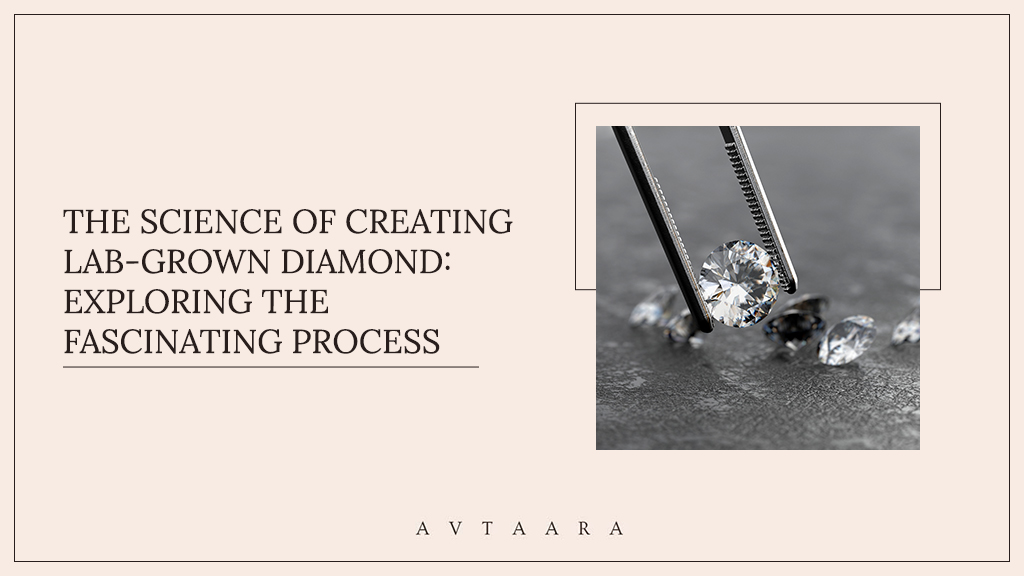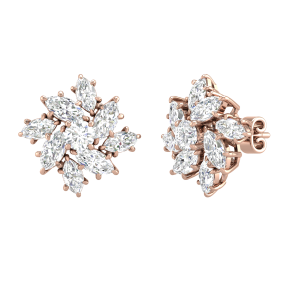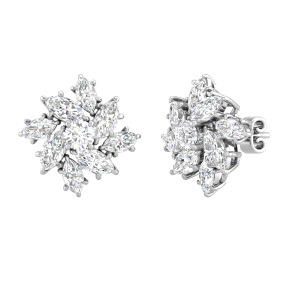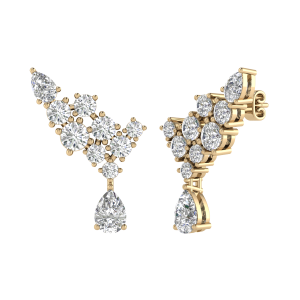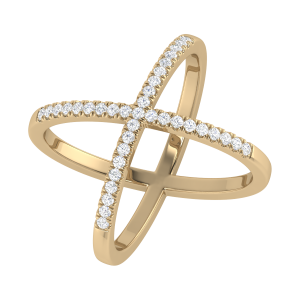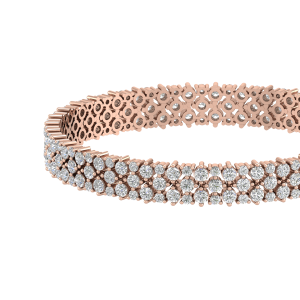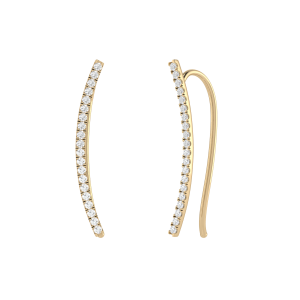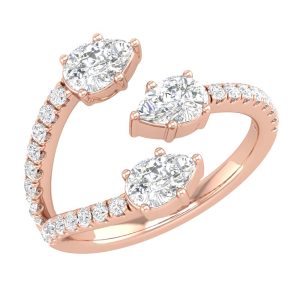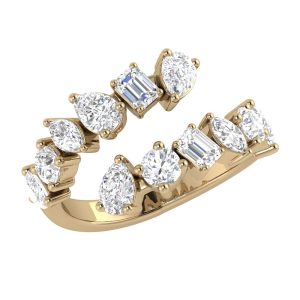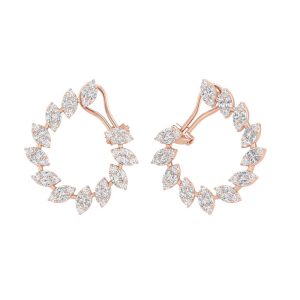In recent years, the jewellery industry has seen a rise in the popularity of lab-grown diamonds. These exquisite gems are created in a laboratory using cutting-edge technology and scientific expertise. In this article, we will delve into the science behind laboratory-grown diamonds and explore the captivating process of their creation.
The Science Behind Laboratory-Grown Diamonds
Lab-grown diamonds are created using advanced scientific techniques that mimic the natural process diamonds undergo beneath the Earth’s surface. While natural diamonds are formed under immense heat and pressure over millions of years, lab-grown diamonds are produced in a much shorter time frame, typically taking weeks or months to grow.
Lab-grown diamonds have garnered attention for their identical chemical, optical, and physical properties to natural diamonds. They possess the same hardness, brilliance, and sparkle that make diamonds so highly coveted. However, what truly distinguishes lab-grown diamonds from their natural counterparts is their origin. While natural diamonds are extracted from the Earth through mining, lab-grown diamonds are created in a controlled environment using technological processes.
By creating diamonds in the laboratory, scientists and researchers can experiment and refine the diamond-growing process. This has led to incredible advancements and innovations in the field, allowing for the production of high-quality lab-grown diamonds that rival their natural counterparts.
Exploring the World of Lab-Grown Diamonds
Lab-grown diamonds have opened up a world of possibilities in the jewellery industry. With their sustainable and ethical production methods, lab-grown diamonds offer an alternative to traditional mining practices. This is particularly appealing to conscientious consumers who value sustainability and want to make a positive impact on the environment.
Furthermore, the controlled environment in which lab-grown diamonds are created allows for greater customization. Scientists can manipulate the growth conditions to produce diamonds of specific sizes, shapes, and colours. This flexibility in production opens up new avenues for creative jewellery designs and allows consumers to find the perfect diamond that suits their preferences.
A Timeline of Laboratory-Grown Diamond Development
The journey of lab-grown diamonds dates back to the mid-20th century when scientists began exploring the possibilities of creating diamonds in a controlled environment. Over the years, significant milestones have been achieved, leading to the development of the sophisticated diamond-growing techniques used today.
In the 1960s, the first laboratory-grown diamonds were created using a process called high-pressure, high-temperature (HPHT) synthesis. This involved subjecting carbon to extreme pressure and heat to transform it into a diamond. The breakthrough opened up new avenues for scientific research and laid the foundation for further advancements in the field.
In the 1980s, chemical vapour deposition (CVD) emerged as a groundbreaking method for growing diamonds. Utilizing a process involving the deposition of carbon atoms onto a diamond substrate, scientists were able to produce high-quality diamonds of various shapes and sizes. This technique revolutionized the industry and paved the way for the commercial production of lab-grown diamonds.
Today, with advancements in technology and a deeper understanding of diamond creation, lab-grown diamonds are now commercially available and sought after by conscientious consumers who value sustainability and ethical sourcing.
Unveiling the Process of Creating Lab-Grown Diamonds
The process of growing lab-grown diamonds can be divided into several key steps. It begins with a tiny diamond seed or a carefully curated carbon source that acts as the foundation for the growth process.
- Diamond Seed Selection: The initial step involves choosing a diamond seed with specific characteristics, such as size, clarity, and colour. This seed will determine the overall quality and appearance of the final lab-grown diamond. Scientists carefully analyze and select the most suitable seed to ensure the desired outcome.
- Diamond Growth Environment: The diamond seed is placed in a growth chamber or reactor, where it is exposed to high temperatures and pressure. This simulated environment facilitates the growth process, allowing carbon atoms to deposit and crystallise onto the seed, gradually expanding its size. The controlled environment ensures optimal conditions for diamond growth, resulting in high-quality diamonds.
- Controlling Growth Conditions: To create high-quality diamonds, precise control over the growth conditions is crucial. Careful monitoring of temperature, pressure, and gas composition ensures optimal growth and minimizes impurities in the diamond structure. Scientists continuously refine and optimize these conditions to produce diamonds with exceptional quality and purity.
- Cooling and Finalizing: Once the desired size is achieved, the diamond is slowly cooled down to promote the solidification of the carbon atoms into a structured diamond lattice. This final cooling stage is essential for ensuring the stability and integrity of the lab-grown diamond. The cooling process is carefully controlled to prevent any structural defects and to enhance the diamond’s overall quality.
Identifying the Characteristics of Laboratory-Grown Diamonds
While lab-grown diamonds possess the same hardness and brilliance as natural diamonds, there are certain characteristics that help gemologists distinguish between the two. These characteristics can be identified through thorough analysis and evaluation processes carried out by reputable gemological laboratories.
- Growth Features: Lab-grown diamonds often exhibit specific growth features, such as distinct colour zones or patterns, that arise from the controlled growth process. These features can be observed under magnification and assist in determining the diamond’s origin. Gemologists meticulously examine these growth features to differentiate lab-grown diamonds from their natural counterparts.
- Chemical Composition: Analyzing the diamond’s chemical composition provides valuable insight into its origin. Lab-grown diamonds typically contain trace elements and isotopic compositions that differ from those found in natural diamonds. Through advanced spectroscopic techniques, gemologists can identify and analyze these chemical signatures to determine whether a diamond is natural or lab-grown.
- Inclusion Patterns: Inclusions, or internal characteristics, can be used to differentiate lab-grown diamonds from natural diamonds. While both types of diamonds can have inclusions, the types and distribution of inclusions differ due to their distinct growth environments. Gemologists carefully examine the inclusion patterns to determine the diamond’s origin and authenticity.
Conclusion – Lab Grown Diamond
As the demand for sustainable alternatives to natural diamonds continues to grow, the science behind laboratory-grown diamonds plays a pivotal role in catering to this evolving market. By understanding the process of creating lab-grown diamonds, consumers can appreciate the meticulous craftsmanship and scientific ingenuity that goes into these remarkable gems.
If you are looking to buy lab-grown diamond jewellery, Avtaara stands as your trusted and exquisite choice. With a commitment to exceptional quality, sustainability, and a diverse range of thoughtfully crafted designs, Avtaara ensures that each lab-grown diamond tells a unique and beautiful story. Choose Avtaara for a captivating and conscious diamond-buying experience, where every purchase becomes a symbol of enduring beauty and ethical luxury.

